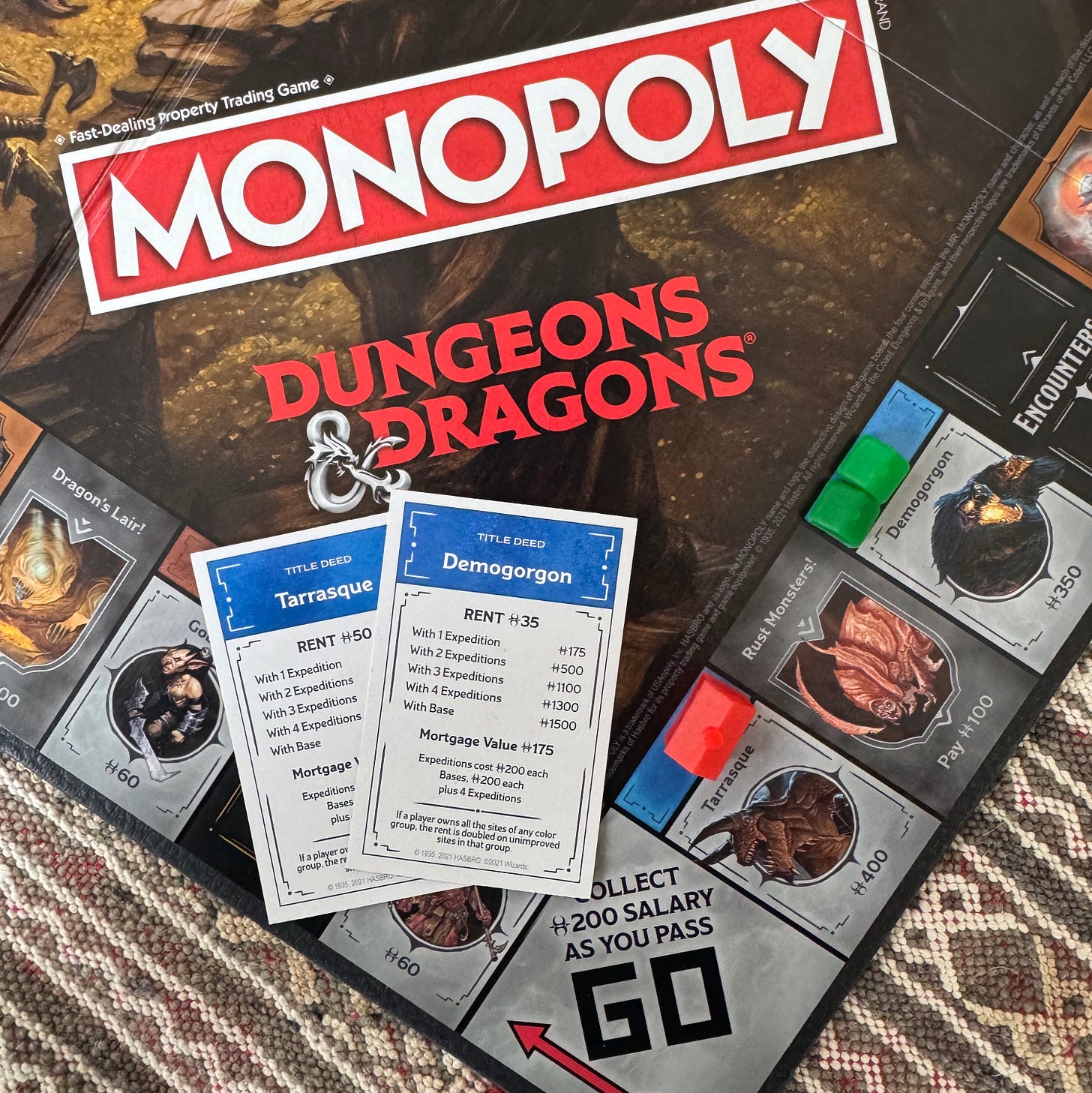My husband brought home a Dungeons & Dragons version of Monopoly. I knew nothing about D&D. While I could still play, I had to think about how the customized elements related to classic Monopoly. So I did a little research.
There are over 300 different official versions of Monopoly themed for everything from NASCAR, D-Day, Hollywood, Bass Fishing, Breaking Bad, Coca-Cola, HM Queen Elizabeth, Dungeons & Dragons, etc. (If you include unofficial versions, there 3000+, including a make-your-own-opoly version and tons of DIY template boards).
Yet despite all these versions, you can pick up any version of Monopoly and know how to play. Why?
Because Monopoly strikes a delicate balance between consistency and customization — and is a great lesson for founders in how to design products.
Consistency
Monopoly’s game play is always the same. While the board changes with each theme, the underlying board structure is always constant:
The corners are always: Go ll Jail/Just visiting ll Free Parking ll Go to Jail.
Every side has ten squares.
Railroads (or equivalent), utilities (or equivalent), and taxes are in consistent places and worth more as a set. Wild cards (like Chance and Community Chest) are also always in the same place.
Properties increase in value as you go around the board.
Individual properties are part of a set.
You must own a set of properties before you can add houses and hotels.
Specialization
Each version of Monopoly is specialized deeply enough to feel true to the theme. Figurines, property names, wild cards, “railroads,” “utilities,” and “taxes” are unique to each version. For example:
On a classic board, a chance card might send you to Illinois Ave. But on a Hollywood board, it might advance you to ‘Studio Lot’ and earn you $50K for a screenplay deal. In the Mario Cart edition, it could be: "You hit a banana peel! Move back 3 spaces."
—
What can we learn from this about designing products?
Some products benefit from specialization — whether for a specific audience, locale, or use case. To do this well, you need:
A solid foundation
Thoughtful specialization
To create a solid foundation, identify the core elements of your product. These should remain consistent, despite any specialization. Make sure the foundation of your product is understandable, predictable, and consistent.
Then, go all in on customizing what sits on top. Be intentional about which elements you adapt to ensure the final product feels cohesive and well-executed.
While Monopoly is a great example, it’s not perfect. Some editions simply swap out property names, which feels cheap and uninspired. The best versions go further, with custom figurines, wild cards, and board elements that make the experience truly immersive.
But even deeply themed versions can have rough edges where the customization abruptly ends. For example, in the D&D version, properties are sites, and players can purchase expeditions and bases to build on them. But those are still represented by the classic green houses and red hotels, which feel incongruent with the D&D theme.
Still, Monopoly’s approach holds a key lesson in how to strike the right balance in designing products: Create a strong, consistent foundation while allowing for deep, thoughtful customization.








Oh wow! I have played a couple of different version, but could never think this way. Now that you've mentioned, I cannot unthink it. It's so cool!
“Monopoly as a platform” is a lovely example, thanks for sharing!